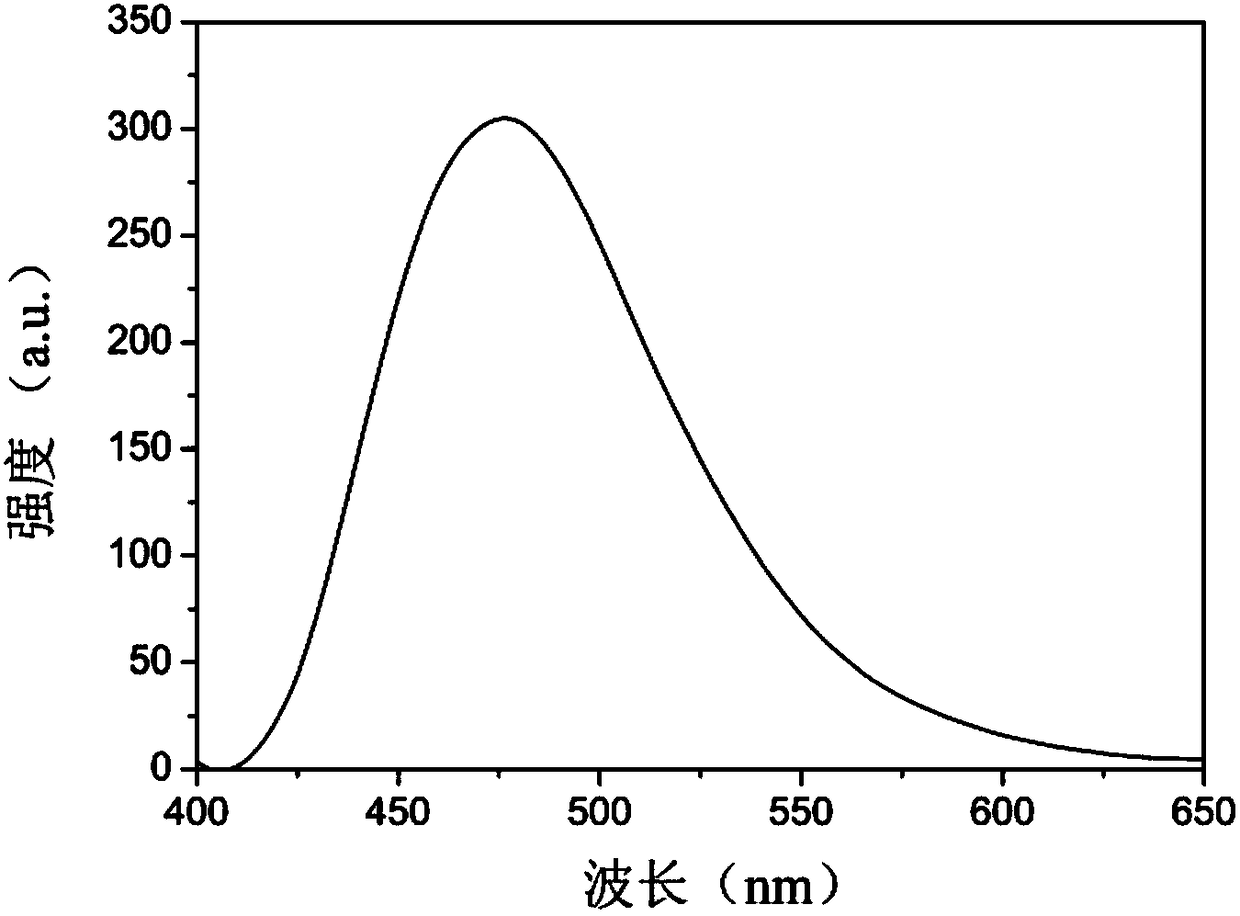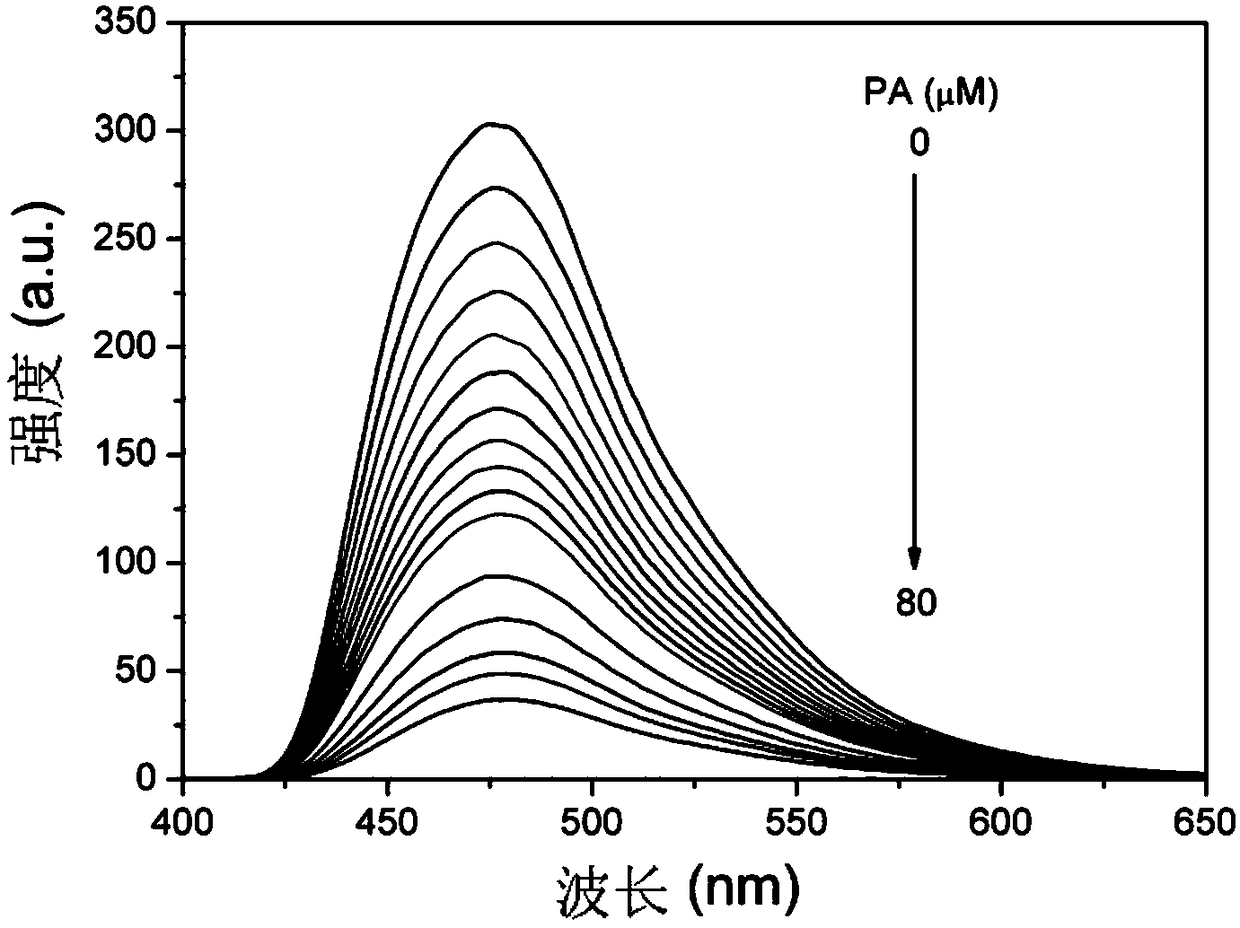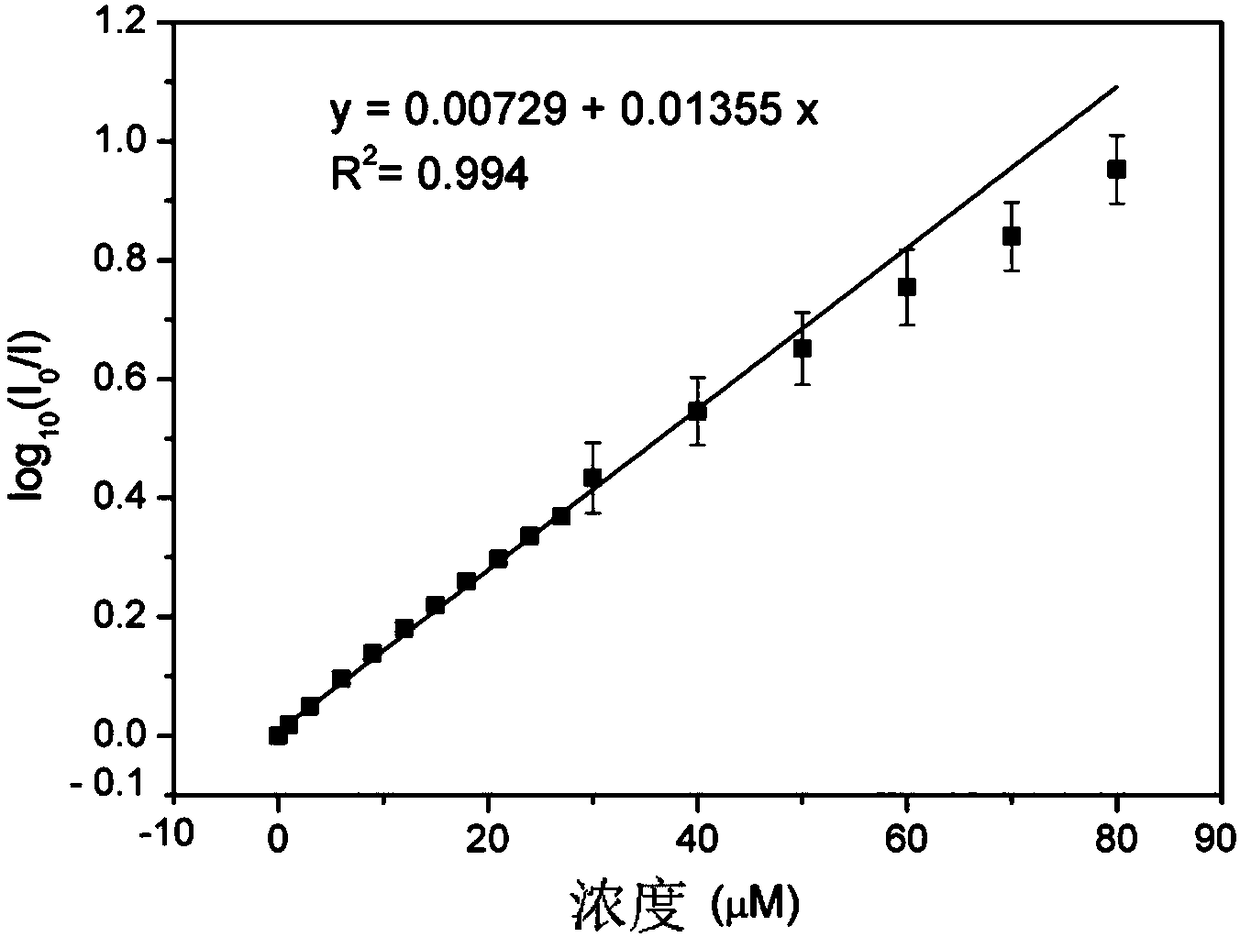Cysteamine-modified copper nanocluster solution fluorescent probe as well as preparation and application
A fluorescent probe and copper nanotechnology, applied in the field of analysis and detection, can solve problems such as high cost, complex material synthesis, and ecological environmental hazards, and achieve the effects of fast detection, simple operation, and avoidance of interference
- Summary
- Abstract
- Description
- Claims
- Application Information
AI Technical Summary
Problems solved by technology
Method used
Image
Examples
Embodiment 1
[0025] Dissolve 56 mg of ascorbic acid in 20 mL of ultrapure water, add 800 μL of 100 mM copper nitrate solution under stirring, and stir vigorously for 2.5 hours. Then, 18 mg of cysteamine hydrochloride was dissolved in 10 mL of ultrapure water, and the above solution was added under stirring, and after vigorous stirring for 1 hour, the fluorescent probe of cysteamine-modified copper nanocluster solution was prepared for use.
[0026] The cysteamine-modified copper nanocluster solution fluorescent probe synthesized in this example can be viewed under a 365 nm ultraviolet light to show green-blue fluorescence. The emission spectra recorded under the fluorescence spectrometer see figure 1 .
[0027] The application effect test of the cysteamine-modified copper nanocluster solution fluorescent probe in the detection of picric acid obtained in this example:
[0028] Take 100 μL of the probe solution and add it into 1900 μL of ultrapure water, and perform fluorescence detection ...
Embodiment 2
[0030] In this example, the cysteamine-modified copper nanocluster solution fluorescent probe synthesized in Example 1 was applied to the detection of picric acid in real water samples.
[0031] Filter the collected river water, lake water, and tap water twice with qualitative filter paper, and prepare 1mM picric acid solution with the filtered river water, lake water, and tap water respectively. Take 100 μL of the probe solution synthesized in Example 1 and add it into 1900 μL of ultrapure water, and perform fluorescence detection in a quartz cuvette using a Perkin-Elmer LS-55 fluorescence spectrometer. Select the excitation wavelength as 365nm and cut light at 430nm. Add picric acid solution successively so that the picric acid concentration in the solution is 8 μM, 16 μM, 20 μM, 28 μM respectively, record the emission spectrum after each addition of picric acid, and record the fluorescence intensity at 480 nm. Substitute the fluorescence intensity at each concentration int...
PUM
| Property | Measurement | Unit |
|---|---|---|
| wavelength | aaaaa | aaaaa |
Abstract
Description
Claims
Application Information
 Login to View More
Login to View More - R&D
- Intellectual Property
- Life Sciences
- Materials
- Tech Scout
- Unparalleled Data Quality
- Higher Quality Content
- 60% Fewer Hallucinations
Browse by: Latest US Patents, China's latest patents, Technical Efficacy Thesaurus, Application Domain, Technology Topic, Popular Technical Reports.
© 2025 PatSnap. All rights reserved.Legal|Privacy policy|Modern Slavery Act Transparency Statement|Sitemap|About US| Contact US: help@patsnap.com



